Quick Read
The Surprising Legal Restrictions on Collecting Rainwater: A State-by-State Analysis
Rainwater harvesting, the process of collecting and storing rainwater for later use, may seem like a simple and eco-friendly solution to water scarcity. However, legal restrictions on rainwater collection vary greatly from one state to another in the United States. While some states have few or no regulations, others impose strict rules that can limit the amount of rainwater you can collect and store.
Collection Limits
One common restriction is the amount of water that can be collected. For example, in Alabama and South Dakota, there are no restrictions on collecting rainwater for personal use. In contrast, in California, you cannot collect more than 55 gallons per container without a permit. (Source: American Rainwater Catchment Systems Association)
Container Size and Placement
Another area of regulation is container size and placement. In Colorado, containers must be located at least 10 feet from any property line to prevent contamination. In Florida, there are no size limits, but containers cannot be placed within 5 feet of a building’s foundation or septic system.
Use and Sale
The use and sale of rainwater are also subject to regulation. In Louisiana, for instance, you can only use collected rainwater for outdoor purposes or as a supplement to municipal water supplies. In Nevada, you cannot sell collected rainwater to anyone outside your household.
Permits and Inspections
Many states require permits and inspections for rainwater harvesting systems. In Texas, for example, a permit is required for any system that collects more than 50,000 gallons of rainwater. In Virginia, inspections are mandatory every three years to ensure the system is functioning properly and does not pose a health risk.
Conclusion
As this state-by-state analysis shows, the legal restrictions on collecting rainwater are complex and varied. Before installing a rainwater harvesting system, it is essential to check your state’s regulations to ensure compliance and avoid potential legal issues or fines.
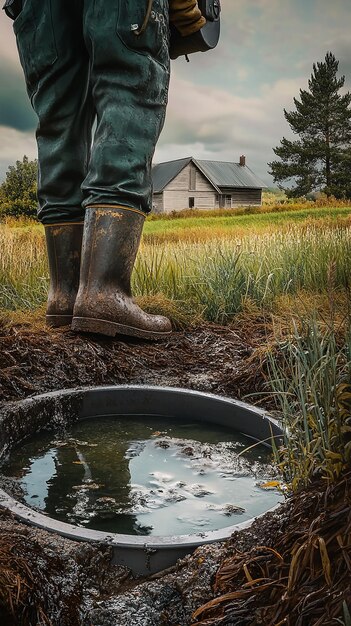
Rainwater Harvesting: Understanding the Legal Restrictions
Rainwater harvesting, the process of collecting and storing rainwater for later use, is a sustainable and eco-friendly solution that offers numerous benefits.
Some of these advantages include: saving water, reducing utility bills, and being an excellent source of water for irrigation and other non-potable uses.
However, it may come as a surprising fact
that there are legal restrictions on collecting rainwater in some states across the globe.
These regulations, often imposed by state or local governments, can significantly impact homeowners, farmers, and other individuals or organizations planning to harvest rainwater.
Reasons for Rainwater Harvesting Regulations
Reasons for these regulations vary. Some governments may enact such restrictions due to public health concerns
, while others may do so to protect water rights and preserve existing water resources.
Understanding the Regulations
It is essential for individuals considering rainwater harvesting to thoroughly research and understand
the regulations applicable in their area.
Failure to comply with these laws can result in legal consequences, including fines or even criminal penalties.
Federal Regulations in the United States
In the United States, for instance, the Environmental Protection Agency (EPA)
has issued guidelines to help clarify the legal framework for rainwater harvesting.
According to these guidelines, collecting and storing rainwater for non-potable uses is generally permissible as long as the water is not drawn from a source that is subject to the Safe Drinking Water Act.
State and Local Regulations
However, state and local regulations may impose additional requirements or restrictions. For example, some states require permits for rainwater harvesting systems, while others limit the size of the storage tanks or specify the materials that can be used.
Conclusion
In conclusion, while rainwater harvesting offers numerous benefits, it is essential to be aware of any legal restrictions or requirements that may apply in your area.
By researching and understanding these regulations, you can ensure a successful rainwater harvesting project while complying with the law.

Background on Rainwater Harvesting
Rainwater harvesting, the process of collecting and storing rainwater for later use, has gained increasing attention in the United States due to growing concerns over water scarcity and conservation. While this practice is generally permitted in many areas, it is subject to various federal laws and regulations. One of the most significant federal regulations governing rainwater harvesting is the Safe Drinking Water Act (SDWA).
Overview of federal laws and regulations governing rainwater harvesting
Under the SDWA, the Environmental Protection Agency (EPA) sets guidelines for rainwater collection systems that provide water for non-potable uses only. These non-potable uses include irrigation, industrial processes, and toilet flushing, among others. The EPA’s guidelines focus on preventing contamination of rainwater harvesting systems by addressing potential sources of pollution such as rooftops, gutters, and storage containers. For example, the EPA recommends regular cleaning of roofs and gutter systems to prevent debris buildup that could harbor bacteria or other contaminants.
Explanation of why state laws are crucial
Despite federal regulations, state laws play a crucial role in governing rainwater harvesting practices due to their ability to impose additional restrictions or requirements. These variations arise from factors such as climate, population density, and water availability. For instance, states with arid climates may have stricter regulations regarding rainwater harvesting to ensure that this practice does not negatively impact water resources. Similarly, densely populated areas may impose more stringent regulations to address potential public health concerns.
Description of how rainwater harvesting regulations vary from one state to another
The specifics of rainwater harvesting regulations can differ significantly among states. For example, some states, like Texas and New Mexico, have adopted explicit legislation promoting rainwater harvesting to encourage water conservation. In contrast, other states, like California, have more stringent regulations due to their history of droughts and population growth. Some states, such as Florida, have specific requirements for the design and installation of rainwater harvesting systems to ensure that they meet local building codes and public health standards.
Discussion on how state regulations impact the design and installation of rainwater harvesting systems
State regulations can influence various aspects of rainwater harvesting system design and installation. For instance, some states may require the use of specific filtration systems or storage containers to ensure water quality. Other regulations might dictate minimum rainwater collection capacities to address drought conditions or population growth. Additionally, some states may require permits for the installation and operation of rainwater harvesting systems. Understanding these state-specific regulations is crucial to ensure compliance with local laws and maximize the benefits of rainwater harvesting.

I State-by-State Analysis of Rainwater Harvesting Regulations
Rainwater harvesting is an environmentally friendly practice that has gained significant attention in recent years due to increasing water scarcity and the need for sustainable water management. State-by-state regulations regarding rainwater harvesting vary widely, making it essential to understand the specific laws and guidelines in each jurisdiction.
California
In California, rainwater harvesting is legal for both residential and commercial use with some restrictions. Homeowners can collect up to 50,000 gallons without a permit, while larger systems require a permit from the State Water Resources Control Board.
Colorado
Colorado has permissive regulations for rainwater harvesting, allowing it without a permit for residential use. However, commercial systems require a permit from the Colorado Department of Public Health and Environment.
Florida
Florida’s rainwater harvesting regulations are more stringent. Residential systems must not exceed 2,500 gallons without a permit, while larger systems require a permit and may need to meet additional requirements.
Georgia
In Georgia, rainwater harvesting is generally permitted, but systems must meet specific design and installation guidelines. Homeowners are encouraged to consult their local health department for more information.
Maryland
Maryland has a unique approach to rainwater harvesting, requiring all new residential developments with 10 or more units to install stormwater management systems that include rainwater collection and treatment.
New Mexico
Rainwater harvesting is encouraged in New Mexico, with no specific permitting or regulation required for residential systems. However, commercial systems may need to meet additional requirements.
Texas
Texas is known for its rainwater harvesting-friendly regulations, with no statewide permits required for residential or commercial systems. However, local regulations may apply.
Conclusion
As this state-by-state analysis of rainwater harvesting regulations shows, understanding the specific laws and guidelines in each jurisdiction is crucial for effective rainwater harvesting implementation. It is recommended that potential harvesters consult their local regulations to ensure compliance and maximize the benefits of this sustainable water management practice.

Alabama: Navigating the Waters of New Regulations
Alabama, known for its rich history, vibrant culture, and beautiful waterways, has recently undergone some significant changes in its regulations governing the use of these water resources. Let’s delve into the current
regulations
and explore the implications of recent legislative shifts for both residents and businesses.
Size Limitations:
The state imposes strict size limitations on various watercrafts to ensure safety and prevent overcrowding. For instance, personal watercrafts (PWC) cannot be longer than 14 feet or wider than 60 inches. Boats with more than ten passengers must be at least 27 feet long.
Permits Required:
A permit is required for any watercraft with a motor, including boats and PWCs. Alabama residents can apply for an annual resident permit, while non-residents must purchase a non-resident permit. There are also special permits for commercial fishing and other activities.
Recent Changes:
Recently, Alabama legislators passed several bills affecting water regulations. One noteworthy change concerns An Act to Modernize Alabama’s Water Laws. This bill clarified the jurisdiction of various water management entities and updated the permitting process for dam projects.
Implications:
These changes can have significant implications for residents and businesses. For instance, the new water laws may streamline the permit application process for dam projects, potentially leading to more economic opportunities in the construction industry. However, smaller businesses and individuals might face increased competition from larger corporations with greater resources to navigate the new regulations. Furthermore, these changes could impact recreational activities, such as fishing and boating, by altering access to certain areas or requiring additional fees. Stay tuned for further updates on how these new regulations unfold in Alabama’s dynamic water scene.

Overview of the Rainwater Harvesting Landscape in Alaska
Alaska, with its vast and diverse landscapes, presents unique opportunities and challenges for rainwater harvesting. Covering approximately 570,641 square miles, it is the largest state in the U.S., with a population of just under 750,000, making it one of the least densely populated areas in the country. The climate varies greatly from region to region, with arid conditions in the south to temperate rainforests in the southeast and frigid tundra in the north. Despite this diversity, Alaskans have a shared reliance on natural water resources due to the limited infrastructure and high cost of imported water.
Current Regulations and Unique Challenges for Rainwater Harvesting in Alaska
In Alaska, rainwater harvesting is generally allowed as long as it complies with local regulations. The State of Alaska does not have specific laws regarding rainwater harvesting, but many municipalities and boroughs do. For example,
Anchorage
:
- Requires a permit for rainwater harvesting systems with a capacity over 1,500 gallons
- Prohibits the use of untreated rainwater for human consumption or irrigation of food-producing gardens without additional treatment
Fairbanks North Star Borough
:
- Has no specific regulations for rainwater harvesting
- Recommends using treated water for human consumption and irrigating food-producing gardens with untreated rainwater only if the system meets certain requirements
Unique Challenges:
Rainwater harvesting in Alaska comes with several unique challenges due to its climate and extreme conditions. Some of these include:
- Extreme temperatures: Harvesting and storing rainwater during the summer months can be challenging due to high temperatures, while ensuring adequate water supply during the winter months can be even more difficult.
- Limited sunlight: The long, dark winters limit the amount of solar energy available for heating and powering rainwater harvesting systems.
- Permafrost: In areas with permafrost, the ground stays frozen year-round, making it difficult to install underground storage tanks and digging foundation trenches.
- High winds: Harvesting rainwater from roofs in high-wind areas requires sturdy structures and proper anchoring to prevent damage.
Rainwater Harvesting in Arizona: An Overview
Rainwater harvesting is an essential water conservation practice that has gained significant attention in the arid state of Arizona, USThis regulatory framework discusses the key statutes and provisions concerning rainwater harvesting in this region, emphasizing some crucial aspects that make it noteworthy.
Regulatory Framework for Rainwater Harvesting in Arizona
In Arizona, rainwater harvesting is primarily governed by the Arizona Revised Statutes (A.R.S.) Title 45 and Title 9, which outline various provisions regarding water collection, storage, and usage. Notably, link, covers water reclamation and rainwater harvesting. This chapter outlines the permissible methods for rainwater collection and storage, ensuring that these practices do not contaminate or degrade the water supply or public health.
Notable Provisions and Issues
One of the most significant issues regarding rainwater harvesting in Arizona is the potential for water contamination. To mitigate this concern, A.R.S. Title 45-127 specifies certain requirements for rainwater harvesting systems. For example:
- Roof Runoff: Only rooftops with no zinc, copper, or lead flashing, or that have been free of pesticides or herbicides for at least six months before the first harvesting event, can be used to collect rainwater.
- Storage Containers: The containers must be tightly sealed and impervious to prevent contamination from pollutants or intrusion of animals or insects.
- Water Treatment: Depending on the intended use, treatment methods like filtration and UV disinfection may be required to ensure the water is safe for consumption or irrigation.
By adhering to these regulations, Arizona residents can successfully implement rainwater harvesting systems that contribute to water conservation while ensuring the safety and quality of their collected water.
Arkansas’ Rainwater Harvesting Regulations: An In-depth Analysis
Rainwater harvesting is an essential practice for both homeowners and farmers in Arkansas, given the state’s variable climate. However, implementing rainwater harvesting systems comes with certain regulatory requirements that aim to ensure sustainable water management practices. In this paragraph, we will bold and italicize essential information regarding the regulations in Arkansas.
Permits
Arkansas mandates that homeowners and farmers obtain a permit before installing rainwater harvesting systems. This regulation emphasizes the importance of compliance, as non-compliance may lead to legal consequences. The application process includes submitting a site plan, detailed system design, and proof of proper collection, storage, and treatment systems.
Size Limits
Bold and italicize important size limits:
- Residential rainwater harvesting systems: The maximum storage capacity is limited to 35,000 gallons or 132,088.7 liters for a single-family residence.
- Farm rainwater harvesting systems: No specific size limits are mentioned in Arkansas regulations, but farmers should follow the guidelines set forth by the Arkansas Agricultural Department.
Impact on Homeowners and Farmers
H4 Analyzing the impact of these regulations on homeowners:
Arkansas’ rainwater harvesting regulations empower homeowners to take control of their water supply while ensuring they comply with the law. These requirements may initially appear burdensome, but they ultimately protect homeowners from potential health hazards and ensure rainwater is collected sustainably.
H5
Advantages for homeowners:
- Reduced water bills by using rainwater for non-potable purposes.
- Protection against potential water shortages and droughts.
- Contributes to the reduction of stormwater runoff, minimizing erosion and flooding risks.
H5
Disadvantages for homeowners:
- Upfront costs for purchasing and installing a rainwater harvesting system.
- Regulations can be complex, requiring professional installation and permits.
H6
Analyzing the impact of these regulations on farmers:
Arkansas’ rainwater harvesting regulations provide a unique opportunity for farmers to adapt to climate variability and optimize their water usage. These regulations may present some challenges but overall, they facilitate sustainable agricultural practices.
H5
Advantages for farmers:
- Reduced reliance on groundwater and surface water sources.
- Decreased water usage costs, particularly during dry seasons or droughts.
H5
Disadvantages for farmers:
- Initial costs for designing, installing, and maintaining large-scale rainwater harvesting systems.
- Compliance with specific regulations set forth by the Arkansas Agricultural Department may differ from residential regulations and require additional resources.
H6
In conclusion, Arkansas’ rainwater harvesting regulations offer both challenges and benefits for homeowners and farmers alike. By understanding the specific requirements and potential advantages, individuals can make informed decisions regarding implementing rainwater harvesting systems in their homes or agricultural operations.
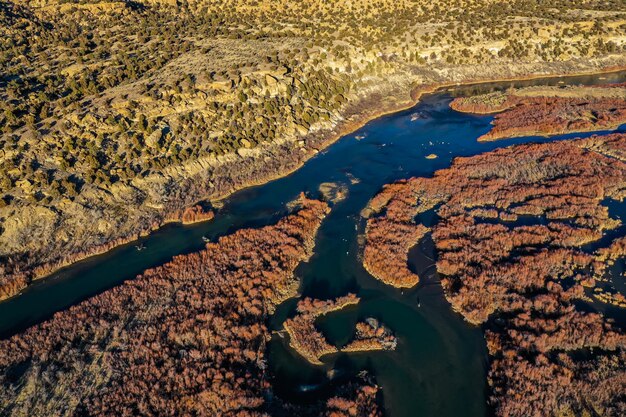
California’s Rainwater Harvesting Landscape: A Necessity Amid Water Scarcity and Population Density
California, the most populous state in the western United States, is known for its diverse landscapes and climates. However, one commonality that unites Californians is their shared experience of living in a region prone to water scarcity. With a growing population of over 39 million people
[according to the U.S. Census Bureau]
, the demand for water continues to increase, putting pressure on the state’s already limited water resources. In response to these challenges, California has been at the forefront of rainwater harvesting practices, which involve collecting and storing rainwater for later use.
Overview of California’s Rainwater Harvesting Practices
Rainwater harvesting is an essential strategy that California has been implementing to mitigate its water shortages. The state’s arid climate, characterized by long periods of drought, makes rainwater an invaluable resource for agricultural and residential use. Moreover, the increasing population density, particularly in urban areas like Los Angeles and San Diego, requires innovative solutions to meet the demands for water.
Regulations Governing Rainwater Harvesting in California
California’s regulations regarding rainwater harvesting are outlined in the link. The program aims to protect public health and the environment while encouraging the use of rainwater for various purposes. Here are some key points:
Collection Systems
Rainwater collection systems
must be designed, constructed, operated, and maintained to prevent contamination. The size of the system depends on factors such as the intended use, roof area, and precipitation patterns.
Storage Containers
Storage containers
must be made of materials that do not contaminate the water. Common materials include polyethylene, concrete, or stainless steel. Containers must also meet certain structural requirements to ensure their longevity.
Roof Surface
Roofs
used for rainwater collection must be free of contaminants. This means that roofs treated with pesticides or other chemicals may not be used for this purpose.
Water Quality and Safety
Water quality and safety
is a major concern for rainwater harvesting. Rainwater may contain various contaminants, such as bacteria or heavy metals, which can pose health risks if not treated properly. As a result, California’s regulations require that rainwater be stored and used in compliance with state and federal drinking water standards.
Recent Developments and Changes
In recent years, California has made significant strides in promoting rainwater harvesting through various incentives and initiatives. For example, Assembly Bill 1872
(AB 1872), passed in 2014, requires new single-family residences and multi-family buildings with up to three stories to install a rainwater harvesting system if the building size is over 5,000 square feet. AB 1872 also requires new commercial and industrial buildings to install rainwater harvesting systems if they have a floor area of over 50,000 square feet. These regulations aim to reduce the demand for municipal water and promote sustainable water management practices.
Conclusion
California’s rainwater harvesting landscape is a testament to the state’s commitment to addressing its water scarcity issues and population density challenges. With innovative regulations, incentives, and initiatives, California is leading the way in promoting sustainable water management practices for the benefit of its residents and the environment.

F. Colorado: Rainwater Harvesting Regulations and Challenges
Colorado, a state known for its arid climate in some areas, has been making strides towards water conservation through rainwater harvesting. Rainwater harvesting, the process of collecting and storing rainwater for later use, has been gaining popularity as a means to mitigate water scarcity. However, before embarking on this eco-friendly journey, it’s essential to understand the rainwater harvesting regulations set forth by the state.
Permits and Size Limits:
According to the Colorado Water Conservation Board, residents can collect rainwater from rooftops without a permit for non-potable uses such as watering landscapes or filling swimming pools. For potable use, however, permits are required from the local health department. The size limit for rainwater harvesting systems is not explicitly stated in the regulations but generally depends on the property’s size and water needs.
Unique Challenges:
Despite the benefits, rainwater harvesting in Colorado comes with some unique challenges. The state’s varying climate and terrain make it essential to consider the following factors:
Snowmelt:
Being a mountainous state, Colorado experiences substantial snowmelt during spring, which can lead to flooding in rainwater harvesting systems. To mitigate this issue, proper system design and maintenance are crucial.
Hard Water:
The hard water present in Colorado can affect the efficiency of rainwater harvesting systems, as minerals like calcium and magnesium can build up and clog filters over time. Regular cleaning and maintenance are necessary to ensure the longevity of these systems.
Local Regulations:
Rainwater harvesting regulations in Colorado can vary significantly from one county to another, making it essential for residents to familiarize themselves with their local rules. While some areas may have lenient regulations, others may require strict adherence to specific guidelines.
Conclusion:
In conclusion, rainwater harvesting in Colorado presents a unique opportunity for water conservation amid the state’s diverse climate and terrain. Although there are challenges to consider, such as permits, size limits, snowmelt, hard water, and local regulations, the benefits of rainwater harvesting in Colorado far outweigh these obstacles. By staying informed and taking proper precautions, residents can enjoy the eco-friendly benefits of this water conservation method while adhering to state regulations.
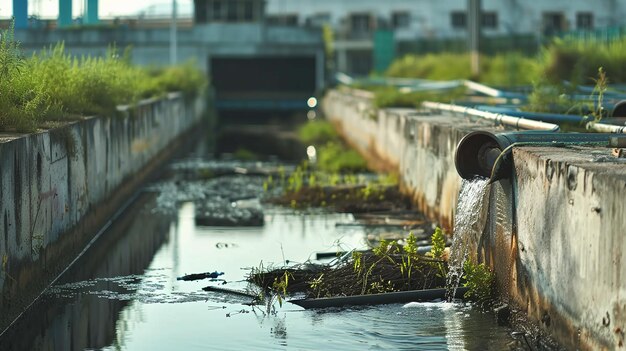
Rainwater Harvesting Regulations in Connecticut: Implications for Residents and Businesses
Connecticut, with its diverse climate and topography, recognizes the importance of rainwater harvesting as a sustainable water management practice. The Department of Public Health (DPH) and the Department of Energy and Environmental Protection (DEEP) oversee the regulations governing rainwater harvesting in the state. Let’s explore the key aspects of these regulations:
Permits and Registration:
Residents and businesses planning to install a rainwater harvesting system must first obtain the necessary permits. The DEEP handles permits for systems over 10,000 gallons, while smaller systems fall under the jurisdiction of local health departments. Applicants must provide plans detailing their system design and demonstrate compliance with state and local codes.
Size Limitations:
Connecticut sets no specific limitation on the size of rainwater harvesting systems. However, systems should not exceed the capacity to store water from a single 24-hour rain event to avoid flooding. Typically, this is around 15,000 gallons for most residential properties. Businesses may require larger systems depending on their water usage.
Storage Materials:
Connecticut regulations mandate the use of food-grade, non-toxic materials for rainwater storage systems. This includes the inner lining of the tank and any piping or fittings that come into contact with harvested water. These materials ensure the safety and quality of collected rainwater for later use.
Implications for Residents:
For residents, Connecticut’s rainwater harvesting regulations can mean significant savings on water bills. Installing a system allows homeowners to collect and use rainwater for irrigation, washing cars, or even flushing toilets. This not only reduces reliance on municipal water sources but also helps conserve this precious resource during periods of drought.
Implications for Businesses:
Businesses in Connecticut can also benefit from rainwater harvesting regulations. By collecting and reusing rainwater, businesses can reduce their water consumption and lower their operating costs. Additionally, implementing a rainwater harvesting system showcases a company’s commitment to sustainable practices, enhancing its public image and appeal.
Conclusion:
Connecticut’s rainwater harvesting regulations set guidelines to ensure the safe and effective implementation of these systems, while also offering numerous benefits for residents and businesses alike. By following these regulations, homeowners and businesses in Connecticut can enjoy the rewards of sustainable water management and contribute to the state’s ongoing efforts towards a greener future.
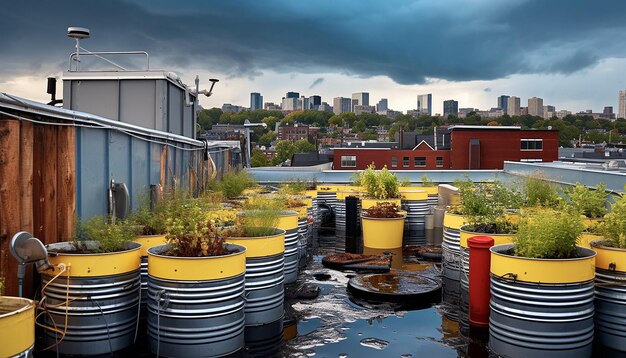
Rainwater Harvesting Regulations in Delaware:
In the First State, Delaware, residents and businesses interested in collecting rainwater for various uses are subject to specific regulations. These rules are designed to ensure sustainable water collection practices while maintaining the state’s environmental standards.
Permitting and Size Limitations:
The Delaware Department of Natural Resources and Environmental Control (DNREC) oversees rainwater harvesting regulations within the state. To install a rain barrel or larger system, individuals are required to obtain a permit from DNREThere are no strict size limitations for rainwater harvesting containers in Delaware; however, the system’s design and installation should adhere to local zoning regulations and building codes.
Challenges and Issues:
One notable challenge for those seeking to collect rainwater in Delaware is the state’s unique climatic conditions. With an average annual precipitation of about 45 inches, rainfall distribution can be uneven throughout the year. This inconsistency may influence the efficiency and capacity demands of rainwater harvesting systems.
Floodplain and Wetlands Protection:
Another issue involves the protection of floodplains and wetlands. Rainwater harvesting structures should not be installed in these areas without prior approval from DNREC or local authorities. Additionally, any construction within 100 feet of a wetland or water body requires a permit to ensure minimal impact on the ecosystem.
Safety and Health Considerations:
Rainwater harvesting systems must meet certain safety standards to ensure clean and safe water for various uses. The collection, storage, and distribution of rainwater should adhere to the Delaware Sanitary Code and guidelines from the U.S. Environmental Protection Agency (EPA). Regular maintenance and inspection are essential to maintaining water quality and preventing contamination.
Conclusion:
Delaware’s rainwater harvesting regulations aim to promote sustainable water collection practices while safeguarding the state’s environmental resources. By adhering to these guidelines, residents and businesses can enjoy the benefits of rainwater harvesting while contributing to a greener and more water-efficient future for Delaware.
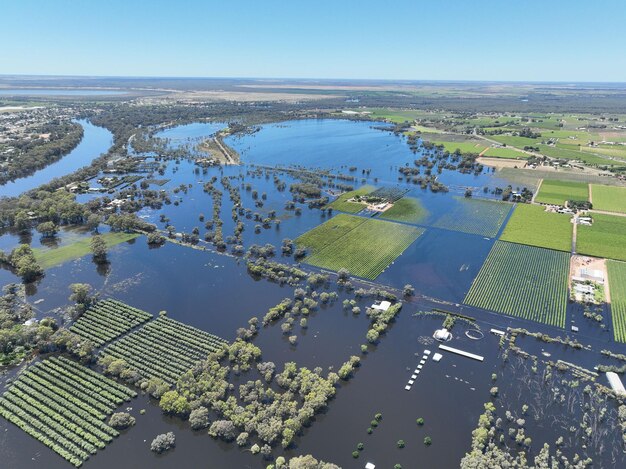
Regulatory Landscape of Rainwater Harvesting in Florida
Florida, with its diverse population of approximately 21 million residents and unique climate, has
significant regulatory considerations
regarding rainwater harvesting. The state’s subtropical climate and frequent heavy rainfall make rainwater harvesting an attractive solution for both residential and commercial applications. However, Florida’s regulatory landscape is complex due to its
population density
, diverse geography, and water management challenges.
The Florida Department of Health (DOH) and the Florida Department of Environmental Protection (DEP) are the primary regulatory agencies responsible for rainwater harvesting in the state. The
DOH
regulates public water supplies and sets standards for rainwater systems that connect to these supplies, while the
DEP
oversees permitting, construction, and operational requirements.
Recent developments and challenges in Florida’s rainwater harvesting regulations include:
Governor Rick Scott’s Executive Order 17-153
: In 2017, Governor Rick Scott issued an executive order to streamline regulations for rainwater harvesting systems. The order aimed to reduce the regulatory burden on small-scale rainwater harvesting projects, but it faced criticism from some stakeholders concerned about potential water quality issues and public health risks.
Florida Senate Bill 1750 (2021)
: This bill, which passed in the 2021 legislative session, allows for increased rainwater harvesting capacity for single-family residences and small businesses. The bill also includes provisions to address potential water quality concerns through education, inspections, and maintenance requirements.
Water management district regulations
: Each of Florida’s five water management districts has its specific regulations regarding rainwater harvesting. These regulations address site-specific considerations, such as the size and location of harvesting systems, water quality testing requirements, and connection to public water supplies.
J. Georgia: An In-depth Look at Rainwater Harvesting Regulations and Their Impact on Residents and Businesses
Description of Georgia’s Rainwater Harvesting Regulations:
Georgia, a beautiful Southern state in the United States, has been implementing regulations regarding rainwater harvesting to address water scarcity and promote sustainable water management. The Georgia Environmental Protection Division (EPD) is the state agency responsible for overseeing these regulations. Rainwater harvesting in Georgia is governed by the State Water Withdrawal Permit Program, which requires a permit for any withdrawal of water greater than 50,000 gallons per day. Rainwater harvesting systems are generally exempted if they store less than 5,000 gallons, but larger systems must comply with the permit program.
Size Limitations:
Systems storing between 5,000 and 50,000 gallons are considered “small public water systems” and must submit an application to the EPLarger systems, referred to as “community water systems,” are subject to more rigorous regulations, including design requirements and ongoing monitoring.
Analysis of the Impact of These Laws on Residents and Businesses:
The implementation of these rainwater harvesting regulations in Georgia has had a significant impact on residents and businesses. On one hand, the regulations have helped promote sustainable water management practices by encouraging the adoption of rainwater harvesting systems. This is particularly important in Georgia, where water scarcity has become a growing concern due to increasing population growth and climate change.
Residents:
For homeowners, the regulations have made it easier to install rainwater harvesting systems for irrigation and other non-potable uses. The permitting process ensures that these systems are designed and installed properly, which helps protect public health and the environment.
Businesses:
For businesses, the regulations have created new opportunities in the rainwater harvesting industry, including the design, installation, and maintenance of larger systems. However, the regulatory requirements can also add costs and complexities that may deter some businesses from adopting these systems.
Conclusion:
In conclusion, Georgia’s rainwater harvesting regulations have both challenges and opportunities for residents and businesses. By promoting sustainable water management practices and ensuring proper design and installation of systems, these regulations help protect public health and the environment while encouraging the adoption of rainwater harvesting. However, the regulatory requirements can add costs and complexities that may require careful planning and consideration for those considering installing larger systems. Ultimately, the benefits of rainwater harvesting in Georgia far outweigh the challenges, making it an important step towards a more sustainable water future for the state.

Overview of the Regulatory Landscape in K. Hawaii
Rainwater harvesting (RWH) is a vital water management practice in the tropical paradise of K. Hawaii. With an average annual rainfall of 30 inches, this Pacific Island chain experiences a humid climate year-round, making it an ideal location for rainwater collection. The population density in K. Hawaii is relatively low compared to other regions, with approximately 742,000 residents spread across eight major islands. This decentralized population distribution makes RWH a sustainable and cost-effective alternative to traditional municipal water systems.
Detailed Examination of the State’s Regulations and Recent Developments
The Department of Health (DOH) in K. Hawaii regulates rainwater harvesting systems under the state’s water code to ensure public health and safety. According to link, all RWH systems must meet specific design, construction, operation, and maintenance requirements. These regulations cover aspects such as container materials, filter sizes, storage capacity, and overflow and runoff management.
In recent years, K. Hawaii has seen a surge in interest in rainwater harvesting due to increasing water scarcity concerns and the desire for more sustainable water management practices. To support this trend, the Department of Land and Natural Resources (DLNR) has implemented several initiatives, such as the Rainwater Harvesting Incentive Program, which provides financial incentives for residential systems up to 10,000 gallons. Additionally, the University of Hawaii at Manoa’s School of Engineering and Technology has developed a rainwater harvesting design guide to assist homeowners in implementing their systems.
Challenges and Ongoing Debates
Despite the benefits of RWH, challenges remain in implementing this practice at scale. One critical issue is the cost-effectiveness of large-scale systems for commercial and industrial applications. Another challenge is the need for standardized regulations across all islands to ensure consistent implementation and compliance. Ongoing debates also surround issues such as water reuse, desalination, and the potential impact of climate change on rainfall patterns.
L. Idaho: Rainwater Harvesting Regulations – A Comprehensive Analysis
Idaho, a state known for its natural beauty and abundant water resources, has established regulations to govern the collection and utilization of rainwater. These rules are designed to ensure the sustainable and safe implementation of rainwater harvesting systems while safeguarding public health and the environment.
Permitting Requirements:
Under Idaho’s rainwater harvesting regulations, residents and businesses wishing to install a system must first obtain a permit from their local health department. The application process includes submitting detailed plans for the proposed system, including its size and location. Permit fees vary depending on the system’s capacity and complexity.
Size Limitations:
Idaho does not impose strict size limitations on rainwater harvesting systems, but they must adhere to certain guidelines. Rain barrels and cisterns are generally allowed, with the maximum container size being 1,000 gallons for residential properties. For commercial applications, larger systems may be considered on a case-by-case basis.
Implications for Residents:
The rainwater harvesting regulations in L. Idaho offer several benefits to residents. By collecting and storing rainwater, homeowners can reduce their reliance on municipal water sources, potentially saving on water bills during periods of drought or high usage. Additionally, rainwater harvesting systems can contribute to landscape irrigation and gardening, reducing the need for chemicals and pesticides.
Implications for Businesses:
Businesses in L. Idaho can also benefit from rainwater harvesting regulations, as they provide an opportunity to reduce water consumption and costs, particularly for industrial processes that require large quantities of water. Rainwater can be used for various purposes such as cooling systems, landscaping, and even toilet flushing in some cases.
Conclusion:
In conclusion, Idaho’s rainwater harvesting regulations strike a balance between sustainability and safety, enabling residents and businesses to collect and utilize rainwater while adhering to public health and environmental standards. These regulations provide an opportunity for water conservation and cost savings, contributing to Idaho’s ongoing efforts to promote sustainable practices and conserve its valuable water resources.

Rainwater Harvesting Regulations in M. Illinois: An Overview
M. Illinois, located in the Midwestern United States, has implemented various regulations regarding rainwater harvesting. These rules aim to ensure the safe and efficient collection, storage, and utilization of rainwater. Let’s delve deeper into some key aspects of these regulations.
Permitting Requirements
In M. Illinois, a permit is typically required for rainwater harvesting projects exceeding certain size thresholds. The specific permit depends on the project’s scale and intended use of the harvested water. For instance, agricultural applications might necessitate a different permit compared to residential projects. It is crucial for potential harvesters to consult their local authorities to ascertain the specific permitting requirements.
Size Limitations
M. Illinois also sets size limitations for rainwater harvesting structures. These limits vary based on the intended use of the harvested water and the local climate conditions. Residential projects, for example, may be subject to smaller storage capacities than commercial or agricultural endeavors. Harvesters should consult their local regulations and consider the specific water needs of their household or enterprise when determining an appropriate system size.
Notable Challenges and Issues
Despite the benefits of rainwater harvesting, several challenges persist for those seeking to collect rainwater in M. Illinois. One major concern is the prevalence of hard water and mineral content in the state’s precipitation, which can impact the quality of the harvested water for various uses. Additionally, potential harvesters must ensure their systems comply with local health and safety regulations to prevent contamination and maintain water quality. Lastly, navigating the permitting process and understanding the specific size limitations can be a complex endeavor for those unfamiliar with rainwater harvesting regulations in M. Illinois.
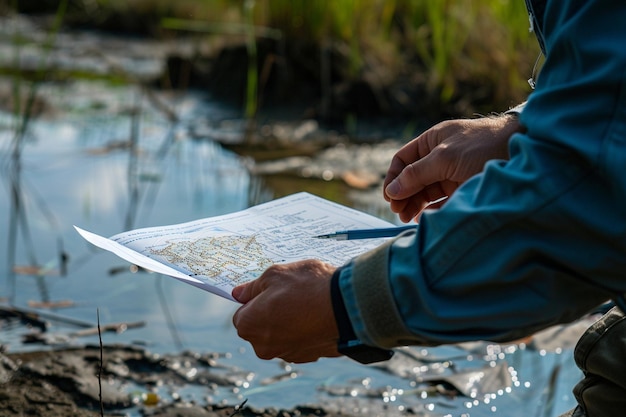
Rainwater Harvesting Regulations in N. Indiana: Permits, Size Limitations, and Impacts
Indiana, specifically the northern region, has implemented regulations to govern the practice of rainwater harvesting. These rules aim to ensure safety and efficiency in rainwater collection systems. Let’s explore some key aspects of these regulations:
Permits:
Harvesting rainwater in N. Indiana requires a permit from the local health department or Indiana Department of Environmental Management, depending on the size and intended use of the system. For residential applications, permits are typically issued based on a simple application process, which includes submitting plans for the rainwater harvesting system and paying a small fee. Commercial installations may face more stringent requirements due to larger systems and potential public health concerns.
Size Limitations:
Regulations set size limitations on rainwater storage tanks based on the intended use of the collected water. In N. Indiana, residential systems can have a maximum capacity of 30,000 gallons (113,562 liters) for non-potable uses such as irrigation, car washing, and toilet flushing. For potable (drinking) water storage, the limit is much lower at 10,000 gallons (37,854 liters) due to health concerns. Commercial applications may have higher limitations depending on their specific needs.
Impact on Residents:
The regulations governing rainwater harvesting in N. Indiana have both positive and negative impacts on residents:
- Pros:: These rules promote safe rainwater collection practices, ensuring water quality for non-potable uses and reducing the overall demand on municipal water supplies.
- Cons:: Stricter regulations and permit requirements can increase installation costs for residents, making rainwater harvesting a less affordable option.
Impact on Businesses:
Businesses in N. Indiana can also be affected by rainwater harvesting regulations:
- Pros:: Compliance with these regulations can lead to a more sustainable business model, reducing water usage and costs while improving public perception.
- Cons:: Strict regulations can increase the complexity and cost of rainwater harvesting systems for businesses, making it a more challenging decision to implement these sustainable solutions.
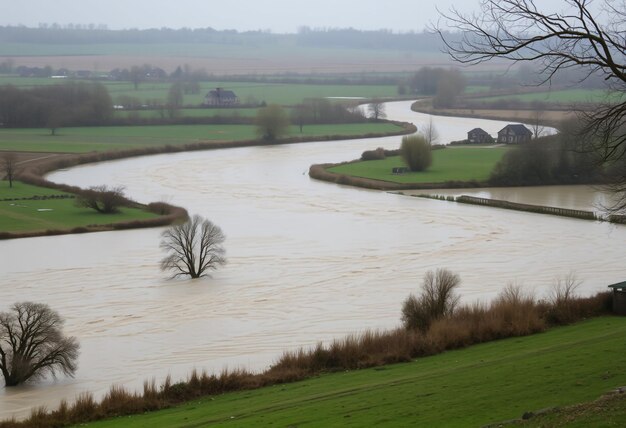
Regulatory Landscape of Rainwater Harvesting in Iowa
Iowa, located in the Midwestern United States, experiences a climate that varies from humid continental in the eastern part to semi-arid in the western regions. The state’s population density is primarily concentrated around urban areas, leaving rural communities to explore alternative water sources, including rainwater harvesting. Rainwater harvesting in Iowa is governed by a combination of state and local regulations that focus on protecting public health, safety, and the environment.
State Regulations
Iowa’s link (DEPA) regulates rainwater harvesting at the state level. The regulations require that all rainwater harvesting systems be designed, constructed, and maintained in accordance with DEPA’s guidelines to ensure the health and safety of water users. The minimum requirements include:
Structural Integrity:
The collection and storage system must be structurally sound.
Overflow Protection:
The system should have adequate overflow protection to prevent flooding and damage to property.
Water Quality:
Water must be treated and stored in a manner that prevents contamination.
In addition to these requirements, Iowa’s rainwater harvesting regulations limit the total volume of water that can be stored in a single container to 15,000 gallons for non-potable uses and 7,500 gallons for potable uses. The regulations also prohibit the use of rainwater harvesting systems to collect water from roofs that have been treated with certain pesticides or chemicals.
Local Regulations and Challenges
Iowa’s local regulations regarding rainwater harvesting can vary significantly from one county to another. Some counties have adopted more stringent regulations, while others have no regulations at all. One of the most significant challenges facing rainwater harvesting in Iowa is the lack of uniformity in regulations across counties and municipalities. This inconsistency can create confusion for property owners seeking to install rainwater harvesting systems, as well as for contractors attempting to design and build these systems.
Recent Developments
In recent years, there have been efforts to streamline and standardize Iowa’s rainwater harvesting regulations. The Iowa Water Resources Coordinating Council (IWRCC) has been working with stakeholders to develop a statewide regulatory framework for rainwater harvesting. This new framework is expected to provide more consistent regulations across counties and municipalities, making it easier for property owners to install and maintain these systems.
Rainwater Harvesting Regulations in P. Kansas
P. Kansas, a Midwestern state in the United States, has implemented regulations to govern rainwater harvesting systems. These regulations aim to promote water conservation and ensure public health and safety. The following is a description of the key aspects of these regulations.
Permits
Harvesting rainwater in Kansas requires obtaining a permit from the State Department of Health and Environment. The permit application must include detailed plans for the system’s design, installation, and maintenance. Permits are granted based on a review of these plans to ensure compliance with state and local codes.
Size Limitations
The size limitations for rainwater harvesting systems in Kansas depend on the intended use of the collected water. For example, a residential system used solely for outdoor irrigation may have a larger capacity than one designed to supply indoor plumbing fixtures. The maximum storage volume is generally determined based on the available roof area and the local water table depth.
Residential Implications
The rainwater harvesting regulations in P. Kansas have significant implications for residents. Installing a rainwater harvesting system can help reduce water consumption, lower utility bills, and provide an alternative water source during droughts or emergencies. However, the permit process and size limitations can add cost and complexity to the installation. Moreover, proper system design and maintenance are essential to avoid health and safety issues.
Business Implications
For businesses, the implications of rainwater harvesting regulations are similar to those for residents. However, the potential benefits can be more substantial due to the larger scale of water usage. Companies may find that investing in rainwater harvesting systems not only reduces costs but also enhances their environmental sustainability and corporate social responsibility.

Rainwater Harvesting in Kentucky: Regulations and Challenges
Overview of Rainwater Harvesting Regulations in Kentucky
Rainwater harvesting, the process of collecting and storing rainwater for later use, has gained significant popularity in Kentucky as a sustainable solution to mitigate water scarcity and reduce reliance on public utility supplies. However, before embarking on this eco-friendly journey, it is essential to familiarize yourself with the state’s rainwater harvesting regulations. In Kentucky, there are no specific statewide laws or permits requiring approval for rainwater collection from residential structures with a capacity of less than 5,000 gallons. (Source: Kentucky Department for Environmental Protection) However, it is recommended to consult with the local health department and utility company to ensure compliance with any municipal or county regulations.
Size Limitations
The size limitation for rainwater harvesting systems in Kentucky depends on the specific jurisdiction and its unique water management needs. Generally, there are no restrictions on the size of the rain barrel or collection system for residential uses. However, larger systems may require a permit from the local health department to ensure proper storage and maintenance.
Notable Challenges and Issues for Rainwater Harvesting in Kentucky
Despite the relative ease of implementing rainwater harvesting systems in Kentucky, there are several challenges and issues that potential collectors should be aware of.
Water Quality
Ensuring the water quality is a primary concern for those seeking to collect rainwater in Kentucky. Rainwater can contain various contaminants, such as bacteria, heavy metals, and sediments, which may pose health risks if not properly treated before usage. Implementing a filtration system can help mitigate these concerns by removing contaminants and providing clean, safe water for various applications, including irrigation, toilet flushing, and even drinking (with proper filtration and testing).
Maintenance and Storage
Proper maintenance and storage are essential for ensuring the longevity and effectiveness of rainwater harvesting systems. Regular inspections, cleaning, and repairs can help maintain the system’s structural integrity and prevent contamination. Additionally, choosing an appropriate storage container that is resistant to UV rays, chemicals, and other environmental factors can help preserve the harvested water quality and maximize its utility.

Rainwater Harvesting Regulations in R. Louisiana: A Comprehensive Overview
Rainwater harvesting, the collection and storage of rainwater for later use, has gained significant attention in Louisiana due to its potential benefits in mitigating water scarcity and reducing reliance on municipal water supplies. However, the implementation of rainwater harvesting systems in this state is subject to specific regulations outlined by the Louisiana Department of Health and Hospitals (LDH).
Permitting and Size Limitations
The permitting process for rainwater harvesting systems in Louisiana varies depending on the size and intended use of the system. For residential applications, a permit is not required for systems with a storage capacity of up to 500 gallons. However, commercial and industrial installations require approval from the LDH’s Office of Public Health (OPH) and may be subject to stricter regulations. Additionally, rainwater harvesting systems that collect from roof areas larger than 2,500 square feet or have a storage capacity greater than 10,000 gallons require a permit from the Louisiana Department of Environmental Quality (LDEQ).
Impact on Residents and Businesses
The implementation of rainwater harvesting regulations in Louisiana has had a significant impact on residents and businesses. For many homeowners, the ability to collect and store rainwater for irrigation or non-potable uses without the need for a permit has resulted in cost savings. However, for businesses seeking to install larger systems, the regulatory requirements can add additional costs and complexities. Furthermore, these regulations may hinder the widespread adoption of rainwater harvesting as a viable solution to Louisiana’s water challenges, particularly in areas prone to drought and water scarcity.
Conclusion
In conclusion, the rainwater harvesting regulations in R. Louisiana offer both opportunities and challenges for residents and businesses seeking to implement rainwater collection systems. While smaller residential installations can proceed without a permit, commercial and industrial applications face more significant regulatory hurdles. As the importance of water conservation becomes increasingly apparent in Louisiana, it is crucial to evaluate the potential impact of these regulations and explore ways to streamline the process for larger systems while maintaining public health and safety.
Sources:

Rainwater Harvesting Regulations in S. Maine: An In-depth Analysis
S. Maine, the northernmost state in New England, has established a series of regulations governing rainwater harvesting systems to ensure sustainable water management. These regulations cover various aspects, including permit requirements, size limitations, and system design standards.
Permit Requirements
Harvesting rainwater in Maine typically necessitates a permit from the local or state authorities, depending on the project’s scale and the intended use of harvested rainwater. For smaller residential projects, homeowners may apply for permits through their municipalities. In contrast, commercial or larger-scale rainwater harvesting systems generally require approval from the Maine Department of Environmental Protection (DEP). It is essential to check with local authorities for specific permit requirements and application procedures.
Size Limitations
The size limitations for rainwater harvesting systems in S. Maine depend on the intended use of collected rainwater, with different regulations applying to residential and commercial projects. For residential applications, such as irrigating gardens or supplying non-potable water for toilets, there are typically fewer size restrictions. However, systems intended to provide potable water for drinking or cooking usually face more stringent limitations and may require additional approvals from the DEP or other authorities.
Residential Implications
For residents in Maine, the regulations on rainwater harvesting offer an opportunity to conserve water and reduce their reliance on municipal supplies. However, the requirement for permits adds a level of complexity to the process and might result in additional costs. Furthermore, size limitations may impact the feasibility and scale of rainwater harvesting systems for larger households or those with more extensive landscapes.
Business Implications
For businesses in Maine, the regulations on rainwater harvesting can present both opportunities and challenges. On the one hand, businesses that rely heavily on water for operations may benefit from collecting and reusing rainwater to reduce their water consumption and costs. However, the more stringent regulations for larger-scale systems and the need for DEP approval may add time and financial considerations to implementation. Additionally, businesses must ensure they comply with all applicable regulations, such as those related to water quality and safety.
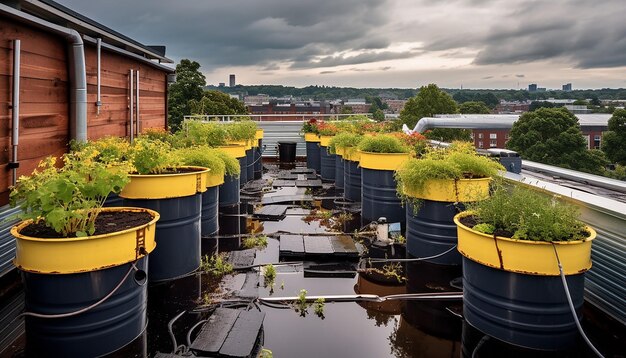
Rainwater Harvesting Regulations in T. Maryland: A Comprehensive Overview
T. Maryland, with its rich natural resources and abundant precipitation, offers ample opportunities for rainwater harvesting. However, before embarking on this eco-friendly endeavor, it is essential to understand the rainwater harvesting regulations set by the state.
Permitting Requirements:
The first step for those seeking to collect rainwater in T. Maryland is to familiarize themselves with the permitting process. The Department of the Environment (MDE) regulates rainwater harvesting under its Onsite Wastewater Program. An application, along with a site assessment and design plan, is required for a permit. The size of the system and its intended use will determine the scope of the application process.
Size Limitations:
The regulations set limitations on the size and capacity of rainwater harvesting systems. In general, systems with a total storage capacity of less than 10,000 gallons do not require an individual permit but must comply with the MDE’s Onsite Wastewater System Design Manual. Larger systems, typically those intended for commercial or agricultural use, will require an individual permit.
Notable Challenges and Issues:
Despite the benefits of rainwater harvesting, some challenges exist for those seeking to collect rainwater in T. Maryland. One such challenge is meeting the state’s water quality standards. Rainwater can contain contaminants, making it essential to ensure that the collected rainwater is safe for use. Regular maintenance and filtration systems are necessary to address this concern.
Another issue relates to the storage capacity of rainwater harvesting systems, which may not be sufficient during extended periods of drought or heavy rainfall. To mitigate this issue, integrating rainwater harvesting with graywater systems and stormwater management practices can help ensure a consistent water supply while reducing the demand on municipal water sources.
Conclusion:
By understanding T. Maryland’s rainwater harvesting regulations and addressing the challenges that come with this sustainable practice, residents and businesses can harness the power of rainwater to reduce their water consumption and contribute to a more resilient and eco-friendly water management system.
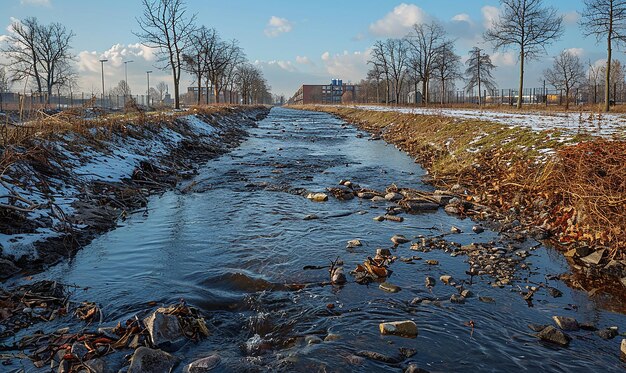
Overview of UMassachusetts Rainwater Harvesting Regulations
In UMassachusetts, residents and businesses seeking to harvest rainwater must adhere to certain regulations established by the Massachusetts Department of Environmental Protection (DEP) and local building codes.
Permits:
A permit is required for rainwater harvesting systems with a capacity greater than 1,000 gallons or those intending to use the harvested water for purposes other than irrigation. Applications are submitted to local boards of health and the Massachusetts DEP, with approval granted upon meeting specific design and safety requirements.
Size Limitations:
Rainwater harvesting systems are restricted in size based on the property’s available area for storage. The DEP suggests a maximum of 10,000 gallons for residential properties and 250,000 gallons for commercial or institutional buildings. These limitations can vary depending on the specific local regulations.
Impact on Residents and Businesses
The rainwater harvesting regulations in UMassachusetts have both advantages and disadvantages for residents and businesses.
Advantages:
The regulations ensure that rainwater harvesting systems are designed and installed safely, protecting public health and the environment. By providing guidelines for system design, installation, and maintenance, these regulations encourage widespread adoption of rainwater harvesting, contributing to water conservation efforts and reducing the demand on municipal water supplies.
Disadvantages:
However, the size limitations and permit requirements can be discouraging for some residents and businesses. The permitting process may involve additional time and costs that could deter potential adopters, limiting the adoption of rainwater harvesting systems in UMassachusetts. Furthermore, the regulations may not apply to all types of rainwater harvesting systems or uses, leaving some opportunities untapped for water conservation and efficiency improvements.
Michigan’s Rainwater Harvesting Regulations: An In-depth Analysis
Michigan, the Great Lakes State, has been taking strides towards water conservation and sustainability. One of its initiatives includes rainwater harvesting regulations that aim to encourage the collection and utilization of rainwater for various purposes. Let’s explore these regulations in detail, highlighting permits, size limitations, and other essential aspects.
Permit Requirements:
The Michigan Department of Environment, Great Lakes, and Energy (EGLE) issues permits for rainwater harvesting systems that have a capacity over 10,000 gallons. This requirement is designed to ensure proper installation and maintenance of larger systems to prevent potential environmental hazards. Residential rainwater harvesting systems with a capacity under 10,000 gallons generally do not require permits as long as they comply with the Michigan Plumbing Code and local regulations.
Size Limitations:
Other Considerations:
Michigan’s rainwater harvesting regulations also cover important aspects like material selection, system design, and water quality standards. For instance, materials used for constructing the rainwater harvesting systems should be non-toxic, non-corrosive, and resistant to UV light. The design of the system must effectively manage rainwater flow rates, storage capacities, and minimize water loss through evaporation or seepage.
Implications for Residents:
Michigan’s rainwater harvesting regulations have significant implications for residents. While smaller systems do not require permits, they must still comply with Michigan Plumbing Code and local regulations to ensure public health and safety. These regulations provide incentives for residents to adopt rainwater harvesting practices, which can lead to long-term water savings and increased self-sufficiency.
Implications for Businesses:
Businesses in Michigan are increasingly adopting rainwater harvesting systems to reduce water costs, promote sustainability, and ensure business continuity during potential water shortages. The regulatory framework for these systems is stringent, with permits required for larger installations. However, the benefits far outweigh the costs as businesses can save on water bills while contributing to the state’s overall water conservation efforts.
Conclusion:
Michigan’s rainwater harvesting regulations provide a solid foundation for sustainable water management practices. With a focus on permits, size limitations, and other considerations, the state is encouraging residents and businesses to adopt rainwater harvesting systems while ensuring proper installation and maintenance. The future of water conservation in Michigan looks promising with these regulations in place.

Rainwater Harvesting Regulations in W. Minnesota: An Overview
Minnesota, with its abundant rainfall and changing climate, offers excellent opportunities for rainwater harvesting. However, implementing this sustainable water collection practice is subject to various regulations in the state, primarily focused on permits and size limitations.
Permitting Requirements
Harvesting rainwater in Western Minnesota is regulated by local and state health departments. A permit from the county health department is necessary for any rainwater harvesting system that collects more than 10,000 gallons. The permitting process includes an application, site inspection, and a plan review to ensure compliance with the regulations.
Size Limitations
Residential rainwater harvesting systems in Minnesota are generally limited to 50,000 gallons. However, commercial and industrial applications may exceed this limit, depending on the specific use case and local regulations.
Challenges and Issues
Although rainwater harvesting is a promising solution for sustainable water use, it comes with challenges. One significant issue is the storage capacity. The large size limit for rainwater harvesting systems might not be feasible for everyone, especially in densely populated areas.
Another challenge is the cost. Rainwater harvesting systems can be expensive to install and maintain. However, long-term savings from reduced reliance on municipal water sources can make up for the initial investment.
Lastly, education and awareness are crucial for successful rainwater harvesting. Understanding local regulations and best practices is essential to ensure a safe and effective system that complies with Minnesota’s regulations.
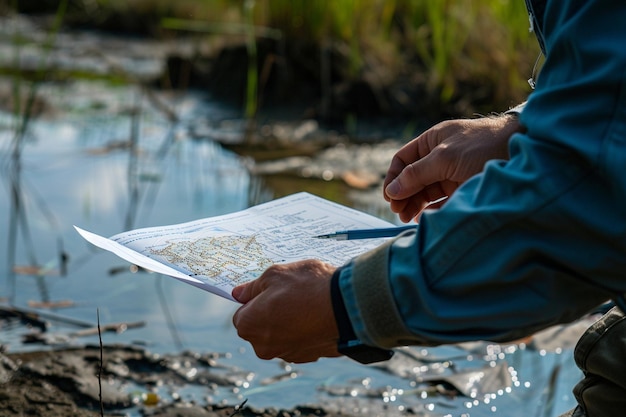
Mississippi’s Rainwater Harvesting Regulations: An In-depth Analysis
Mississippi, the “Hospitality State,” is known for its rich history, beautiful landscapes, and unique cultural heritage. However, when it comes to rainwater harvesting, the regulatory landscape can be quite complex. This paragraph aims to provide a comprehensive description of Mississippi’s rainwater harvesting regulations and analyze their impact on residents and businesses in the state.
Permits:
The first thing to know about rainwater harvesting in Mississippi is that it requires a permit from the Mississippi State Department of Health (MSDH). The permits are issued under the Public Water Supply Regulations, Section 1108.130. The permit application process includes submitting a detailed site plan, design specifications for the system, and proof of bacteriological analysis of the harvested water.
Size Limitations:
The size limitations for rainwater harvesting systems in Mississippi depend on the intended use of the water. For non-potable uses such as irrigation or industrial processes, there are no specific size limitations. However, for potable uses like drinking water, the maximum capacity is limited to 5,000 gallons above ground or 10,000 gallons below ground.
Impact on Residents:
The regulations have both advantages and disadvantages for residents. On the positive side, having regulations ensures that rainwater harvesting systems are designed and installed safely, reducing potential health risks. However, the permitting process can be time-consuming and costly, which may discourage some homeowners from installing systems.
Impact on Businesses:
For businesses, the regulations can be particularly impactful. The permitting process and size limitations may make rainwater harvesting a more significant investment for larger systems. However, businesses that can navigate the regulations stand to benefit from reduced water costs and potential sustainability marketing advantages.
Conclusion:
In conclusion, Mississippi’s rainwater harvesting regulations aim to ensure safe and effective implementation of these systems while balancing the needs of residents and businesses. Understanding these regulations can help potential harvesters navigate the process and make informed decisions about their rainwater harvesting systems.
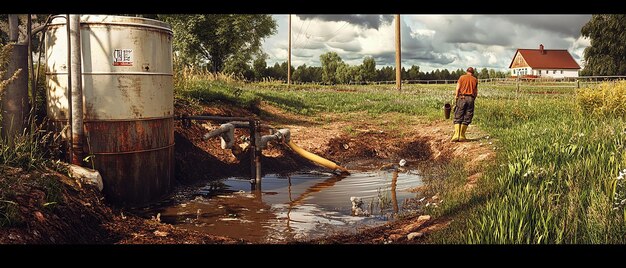
Missouri’s Rainwater Harvesting Regulations: An Overview
Missouri, a midwestern state known for its diverse landscapes and rich history, has rainwater harvesting regulations in place that govern the collection and use of rainwater. These regulations aim to ensure the sustainable use of water resources while maintaining public health and safety.
Permits and Fees
In Missouri, permits are required for the installation of rainwater harvesting systems. The permitting process varies depending on the size and location of the system. For instance, a residential system with a capacity of up to 30,000 gallons does not typically need a permit. However, commercial systems or those exceeding the capacity limit fall under more stringent regulations. Fees associated with permits can range from minimal to substantial, depending on the project scope.
Size Limitations
The regulations also impose size limitations on rainwater harvesting systems. For residential use, the maximum size is 30,000 gallons. This limit ensures that homeowners can collect a sufficient amount of water for non-potable uses while maintaining a reasonable balance with their neighbors and the community. Commercial systems, on the other hand, may have larger capacity limits based on specific project requirements.
Implications for Residents
For residents of Missouri, these regulations present both opportunities and challenges. On the one hand, they can take advantage of rainwater harvesting to reduce their water consumption and utility bills. On the other hand, they must comply with the regulations, which may involve obtaining permits and installing systems within size limitations.
Implications for Businesses
For businesses, rainwater harvesting regulations can be a significant factor in their operations. They must consider the cost of permits and the installation of large-scale systems when planning for water usage. However, they can also benefit from rainwater harvesting by reducing their reliance on municipal water sources and potentially saving money in the long run.
Conclusion
In conclusion, Missouri’s rainwater harvesting regulations offer a balance between water conservation and public health and safety. They provide guidelines for the installation and use of rainwater harvesting systems while allowing residents and businesses to reap the benefits of this sustainable water management practice.
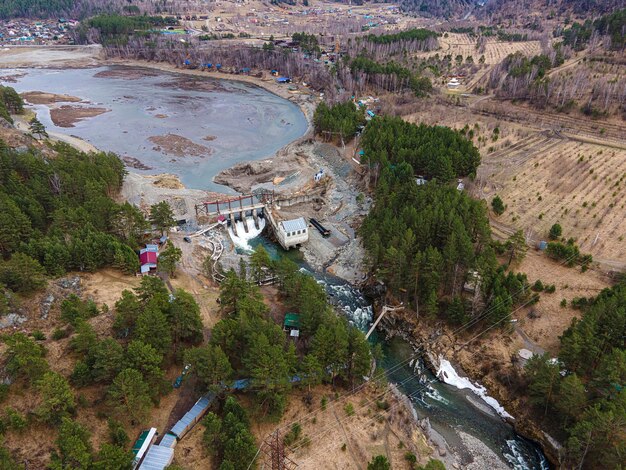
Z. Montana: Rainwater Harvesting Regulations
Overview
Z. Montana, a beautiful state in the western United States, has implemented various regulations to govern rainwater harvesting. These regulations aim to ensure the sustainable use of this precious resource while maintaining public health and safety.
Permits
The first step to rainwater harvesting in Z. Montana is obtaining the necessary permits from the local health department or environmental quality agency. Residents and businesses are required to submit an application, which includes a site plan, system design, and proof of compliance with applicable codes. The permitting process may vary depending on the project size and location.
Size Limitations
Rainwater harvesting systems in Z. Montana are subject to size limitations. Residential rain barrels, for instance, typically have a maximum capacity of 500 gallons. Commercial and industrial systems may have larger capacity limits, depending on the project’s scope and purpose. These restrictions are intended to prevent the hoarding of excess rainwater and ensure availability for others.
Impact on Residents
The rainwater harvesting regulations in Z. Montana have both positive and negative effects on residents. On the one hand, these laws encourage water conservation and reduce dependence on municipal water sources during droughts. Moreover, harvested rainwater can be used for various purposes, such as irrigation or flushing toilets, helping residents save on utility bills.
Impact on Businesses
For businesses, the regulations can present challenges. Larger rainwater harvesting systems may require significant investment in infrastructure and engineering design, as well as ongoing maintenance costs. Additionally, businesses must comply with strict regulations regarding water quality and storage capacity to ensure safety for their customers and employees.
In Conclusion
Rainwater harvesting in Z. Montana is subject to various regulations that aim to balance water conservation with public safety and health concerns. By following these guidelines, residents and businesses can enjoy the benefits of rainwater harvesting while contributing to a more sustainable future for the state.
Rainwater Harvesting Regulations in Nebraska: An Overview
Nebraska, a Midwestern state in the United States, has established regulations for rainwater harvesting to ensure sustainable water use and protect public health. These regulations primarily address permits, size limitations, and other essential aspects of rainwater collection systems.
Permitting Requirements
Harvesting rainwater in Nebraska typically requires obtaining a permit from the local health department. The permitting process aims to ensure that rainwater harvesting systems are designed and installed correctly to prevent potential health hazards, such as water contamination. This requirement generally applies to all residential, commercial, and agricultural rainwater harvesting systems.
Size Limitations
Nebraska’s regulations set size limitations for rainwater harvesting systems based on the intended use of the collected water. For instance, a residential rainwater harvesting system may be limited to a storage capacity of 50,000 gallons or less if used exclusively for irrigation purposes. However, size limitations can vary depending on the specific regulations of each municipality within Nebraska.
Notable Challenges and Issues
One significant challenge for those seeking to collect rainwater in Nebraska is the presence of hard water, which can lead to mineral buildup and reduced system efficiency. Regular maintenance, including filtering and descaling, may be necessary to keep rainwater harvesting systems functioning effectively.
Another issue arises from the potential for contamination of collected rainwater. Roof runoff can contain pollutants like bird droppings, industrial fallout, and agricultural chemicals, which may require additional filtration or treatment before use.
Lastly, inconsistencies in regulations across Nebraska’s various municipalities can create confusion for individuals and organizations seeking to install rainwater harvesting systems. It is crucial to consult with local authorities to determine the specific regulations governing rainwater collection in your area.
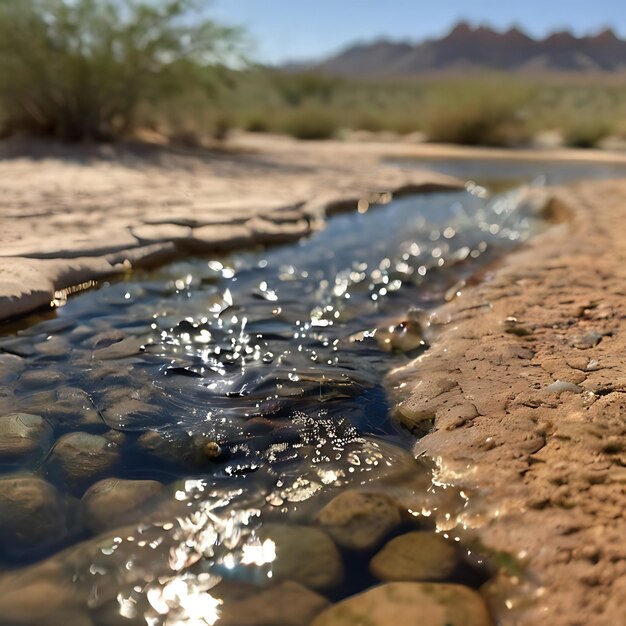
Nevada’s Rainwater Harvesting Regulations: A Comprehensive Overview
Overview
Nevada, a semi-arid state in the western United States, has implemented regulations to encourage rainwater harvesting for residential and commercial purposes. These regulations cover various aspects such as permits, size limitations, and installation requirements.
Permitting Requirements
The Nevada Revised Statutes (NRS) governs rainwater harvesting. According to NRS 443A.200, permits are required for the installation of any rainwater harvesting system larger than 5,000 gallons. The Nevada State Department of Health and Human Services (NS DHHS) issues these permits, and applicants must submit plans detailing the system’s design, materials, and installation methods.
Size Limitations
Smaller systems, under the 5,000-gallon limit, do not require permits. However, they are subject to local regulations. For instance, Clark County
has a 37,000-gallon maximum for rainwater storage in residential zones.
Washoe County
allows up to 50,000 gallons in residential zones.
These limitations may vary by jurisdiction. Businesses, meanwhile, have no set size limit but must comply with the permitting process.
Impact on Residents and Businesses
Nevada’s rainwater harvesting regulations have had a significant impact on residents and businesses in several ways. The regulations:
Encourage Water Conservation
The regulations promote water conservation, helping to reduce strain on limited water resources.
Reduce Water Bills
By collecting rainwater, residents and businesses can decrease their reliance on municipal water supplies and save on their water bills.
Foster Innovation and Sustainability
The regulations create an environment conducive to innovation, leading to the development of advanced rainwater harvesting systems and technologies.
New Hampshire’s Rainwater Harvesting Regulations: An In-depth Analysis
New Hampshire, the
Granite State
, has implemented regulations to govern rainwater harvesting practices. It’s essential for residents and businesses to understand these rules to ensure compliance and make the most of this sustainable water collection method.
Permits
Rainwater harvesting in New Hampshire may require a permit, primarily for commercial and industrial applications. The
New Hampshire Department of Environmental Services (DES)
issues permits based on the intended use of the harvested rainwater, storage capacity, and location. Residential projects typically do not require permits as long as the total storage capacity does not exceed 1,000 gallons.
Size Limitations
The size limitations for rainwater harvesting structures in New Hampshire vary depending on the intended use. For residential purposes, a rain barrel with a capacity of up to 1,000 gallons is typically allowed without a permit. However, larger systems may require approval from the local health officer and the DES. In contrast, commercial and industrial applications generally have no size restrictions but must adhere to specific design and construction requirements.
Implications for Residents and Businesses
Understanding New Hampshire’s rainwater harvesting regulations has several implications for residents and businesses in the state. For residential users, these rules provide clarity on allowable rainwater collection systems, offering an opportunity for water conservation and reduced reliance on municipal water supplies. However, larger systems may necessitate permits and adherence to specific design requirements, adding upfront costs and complexity.
Businesses
For businesses, rainwater harvesting can lead to significant water savings and cost reductions, particularly in sectors with high water usage such as agriculture, landscaping, and manufacturing. However, larger rainwater harvesting systems require a permit, which can add to the initial investment and ongoing maintenance costs.

Rainwater Harvesting in New Jersey: Regulations, Challenges, and Solutions
New Jersey, the Garden State, is known for its diverse landscape and abundant rainfall. However, collecting and utilizing rainwater for domestic use in this state is subject to specific regulations.
Permits
The New Jersey Department of Environmental Protection (NJDEP) requires a permit for the collection and storage of rainwater. The permit application process includes submitting detailed plans of the harvesting system, demonstrating compliance with applicable regulations, and paying a fee.
Size Limitations
The maximum size for rainwater harvesting systems in New Jersey is 25,000 gallons for residential properties. This limit ensures that homeowners’ systems do not interfere with the public water supply or drainage infrastructure. However, larger systems may be considered on a case-by-case basis.
Challenges and Issues
Contamination and Water Quality: Rainwater may contain contaminants, such as heavy metals or bacteria, that could pose health risks. Therefore, proper filtration and treatment systems are essential to ensure clean water for various uses.
Solar Panels
Rooftop Solar Panels: Installing rainwater harvesting systems in conjunction with solar panels adds complexity and potential challenges. Proper installation, maintenance, and coordination between the two systems are crucial to ensure efficient energy production and safe water storage.
Solutions
Despite the regulations and challenges, rainwater harvesting remains a valuable solution for New Jersey residents. By collecting and utilizing rainwater, homeowners can reduce their water bills, conserve water resources, and contribute to sustainable living. Proper planning, installation, and maintenance of rainwater harvesting systems are key factors in ensuring a successful and safe implementation.
Stay Informed
For the latest information on rainwater harvesting regulations in New Jersey, visit the NJDEP website or consult with a professional. Together, we can make the most of our natural resources while ensuring public health and safety.

New Mexico’s Rainwater Harvesting Regulations: An Overview
Rainwater harvesting, the practice of collecting and storing rainwater for later use, is gaining popularity in New Mexico due to its potential to reduce water consumption and mitigate drought impacts. However, the regulations governing this practice can significantly influence residents and businesses in the state.
Permits:
New Mexico requires permits for rainwater harvesting systems with a capacity greater than 2,000 gallons. The New Mexico Environment Department’s Water Quality Control Commission oversees these permits to ensure that the collected water does not contaminate groundwater or surface water sources. Applicants must submit a site plan, detailed design specifications, and proof of proper construction techniques.
Size Limitations:
Impact on Residents:
For homeowners, the regulations can provide a sense of security that their rainwater harvesting systems are safe and compliant. However, for those seeking to build larger systems or connect to existing ones, the permitting process can be time-consuming and expensive.
Impact on Businesses:
Businesses, particularly those with large operations or multiple sites, may face unique challenges in adhering to New Mexico’s rainwater harvesting regulations. The permitting process and potential limitations on system size could impact their ability to efficiently manage water usage and costs.

Rainwater Harvesting Regulations in New York City:
New York City, with its dense population and heavy precipitation, has implemented stringent rainwater harvesting regulations to ensure the sustainable use of this valuable resource. The
Department of Environmental Protection (DEP)
is responsible for issuing permits and setting size limitations for rainwater harvesting systems. According to the link, the minimum size for residential rainwater harvesting systems is 250 gallons, while commercial and institutional systems can be up to 1 million gallons. It’s important to note that all systems must meet specific design requirements to prevent contamination and ensure public health and safety.
The
permitting process
involves a site assessment, system design review, and regular inspections to ensure compliance with local codes. This regulatory framework aims to promote the use of rainwater harvesting while maintaining the highest standards of water quality and public health protection.
For residents, these regulations present an opportunity to reduce their water consumption and save on utility bills. By collecting rainwater for use in gardening, car washing, and other non-potable applications, homeowners can reduce their dependence on municipal water sources during peak demand periods. Additionally, rainwater harvesting can serve as a resilience measure during power outages or emergencies when access to public water may be disrupted.
For businesses, rainwater harvesting can lead to significant cost savings and increased sustainability. Larger systems can provide a reliable alternative water source for cooling towers, landscape irrigation, toilet flushing, and industrial processes. Moreover, the use of rainwater can help businesses achieve LEED certification or other sustainability goals, enhancing their brand image and public perception.
Conclusion:
New York City’s rainwater harvesting regulations strike a balance between promoting sustainable water use and maintaining public health and safety. These regulations present an opportunity for both residents and businesses to reduce their water consumption, save on utility bills, and contribute to the city’s overall sustainability efforts. By following the guidelines set forth by the DEP, New Yorkers can harness the power of rainwater and create a more resilient, efficient, and sustainable urban environment.
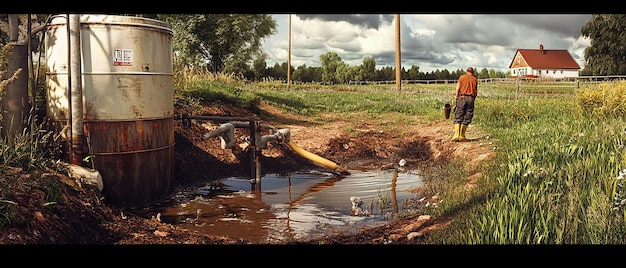
Overview of North Carolina’s Rainwater Harvesting Regulations
In North Carolina, homeowners and property owners are allowed to collect rainwater for various uses such as irrigation, livestock watering, or even human consumption after proper treatment. However, there are regulations in place to ensure that rainwater harvesting systems are safe and effective.
Permits:
According to the North Carolina Division of Water Quality, a permit is required for rainwater harvesting systems that have a capacity greater than 3,000 gallons. The permit application process involves submitting a site plan, a design of the system, and paying a fee.
Size Limitations:
There is no specific size limitation for rainwater harvesting systems in North Carolina, but the storage capacity should not exceed the available roof area or the capacity of the treatment system.
Notable Challenges and Issues
- Water Quality: North Carolina’s rainwater can contain various contaminants such as bacteria, heavy metals, and industrial pollutants. Harvested rainwater should be treated before use to ensure water quality.
- Roof Runoff: The quality of roof runoff can also impact the water quality of harvested rainwater. Roofs can collect debris, pollutants, and chemicals that can contaminate the water.
- Public Perception: Some people have concerns about collecting rainwater due to potential health risks or negative perceptions of “collecting dirty water.” Education and awareness campaigns can help address these concerns.
Exploring North Dakota’s Rainwater Harvesting Regulations: Permits, Sizes, and Their Implications
North Dakota, a state known for its rich agricultural landscape and plentiful precipitation, has implemented regulations to encourage rainwater harvesting. This water conservation practice involves collecting and storing rainwater for later use, thereby reducing dependence on municipal or groundwater sources.
Permit Requirements
The state of North Dakota requires residents and businesses to obtain a permit from their local health department when constructing a rainwater harvesting system. The permitting process ensures that systems are designed, installed, and maintained in accordance with state regulations. Permit fees vary depending on the size of the system.
Size Limitations
Impact on Residents
The permitting and size limitations have both advantages and disadvantages for North Dakota residents. On the positive side, these regulations provide a level of uniformity and safety in rainwater harvesting systems. They also prevent the installation of oversized systems that could disrupt neighborhood water supplies or pose flooding risks.
Impact on Businesses
For businesses, the regulations can result in increased costs for large rainwater harvesting systems and the need for permits. However, the benefits of water conservation and potential cost savings through reduced municipal water usage may outweigh these expenses.
Ohio: An In-depth Look into Rainwater Harvesting Regulations
Ohio, with its diverse topography and climate, has implemented regulations to govern rainwater harvesting systems for both residents and businesses. Let us delve deeper into these regulations and explore their implications:
Permits
To install a rainwater harvesting system, Ohioans must first obtain the necessary permits. Depending on the location and size of the system, different permits may be required from local health departments, water resource agencies, or building departments. Homeowners may need to apply for a plumbing permit for systems larger than 10,000 gallons. Businesses will typically require more extensive permits and inspections.
Size Limitations
Residential rainwater harvesting systems in Ohio are generally limited to a 50,000-gallon capacity. Larger systems may require additional permits and inspections. Commercial systems, on the other hand, can have larger capacities but will need to comply with more stringent regulations and permitting processes.
Implications for Residents
Ohio’s rainwater harvesting regulations provide a balanced approach, offering residents the opportunity to conserve water while maintaining public health and safety. For many homeowners, these regulations may not pose significant barriers, as most systems installed in Ohio fall below the size limitations. However, for those seeking larger systems or wanting to connect their harvested rainwater to their plumbing system, navigating the permitting process can be challenging.
Implications for Businesses
Businesses in Ohio stand to benefit significantly from rainwater harvesting regulations. With larger capacity systems and more complex installations, these entities can reduce their water consumption and costs while demonstrating a commitment to sustainability. However, the regulatory landscape can be intricate, requiring businesses to engage in extensive planning, permitting, and inspections processes.
In conclusion
, Ohio’s rainwater harvesting regulations offer a balanced approach that allows residents and businesses to conserve water while ensuring public health, safety, and environmental protection. Understanding these regulations can help potential harvesters navigate the process and reap the benefits of rainwater harvesting.
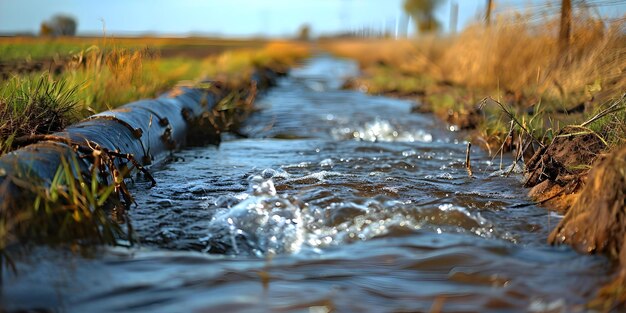
JJ. Oklahoma: Rainwater harvesting, the practice of collecting and storing rainwater for later use, has been gaining popularity in many states as a sustainable water management solution. In Oklahoma, residents and businesses are allowed to collect rainwater under certain regulations, which aim to ensure public health and safety. Here’s an overview of these rules and some notable challenges for those seeking to collect rainwater in the Sooner State.
Regulations:
In Oklahoma, there are no statewide permits required for rainwater collection systems with a capacity of less than 5,000 gallons. However, it is essential to check local regulations since some cities and counties may have specific rules. For instance, in Norman, residential rainwater harvesting systems must be approved by the city’s stormwater management program. As for size limitations, there are no strict restrictions on the capacity of rain barrels or other collection containers.
Challenges:
While rainwater harvesting in Oklahoma is relatively unrestricted, some challenges may arise for those seeking to collect rainwater. One issue is the state’s climate and geography. Oklahoma experiences considerable seasonal variations in precipitation, with some areas receiving abundant rainfall during certain periods while others face prolonged dry spells. This inconsistency may impact the reliability and availability of collected rainwater.
Solutions:
To mitigate this challenge, homeowners and businesses in Oklahoma may consider implementing larger-scale rainwater harvesting systems that can store sufficient water during wet periods to carry them through dry spells. Additionally, using rainwater for non-potable applications such as landscaping and irrigation can help reduce the overall demand for municipal water supplies.
Additional Considerations:
Another challenge in Oklahoma relates to maintaining the quality of collected rainwater. Given the state’s agricultural activities and potential for industrial contamination, it is essential to ensure that harvested rainwater is free from harmful chemicals or bacteria. Regularly inspecting and cleaning collection systems can help maintain water quality.
Oregon’s Rainwater Harvesting Regulations: An In-depth Analysis
Description of Oregon’s Rainwater Harvesting Laws
Oregon, known for its plentiful rainfall, has regulations governing the collection and usage of rainwater. These regulations cover permits, size limitations, and more. According to the link, a permit is required for any rainwater system larger than 3,000 gallons. For smaller systems, no permits are needed. The size limitations apply only to above-ground storage tanks, and there’s no restriction on the total collection capacity or the number of systems per property.
Impact of Rainwater Harvesting Regulations in Oregon
The regulations have a significant impact on residents and businesses in Oregon. On the positive side, they provide guidelines for safe water collection practices and ensure that rainwater is not contaminated with sewage or industrial effluents. However, these regulations also add complexity and cost to implementing rainwater harvesting systems, particularly for larger projects requiring permits. Small-scale systems, on the other hand, remain relatively unregulated and accessible to homeowners and small businesses. The balance between regulations and accessibility will continue to be an important consideration as Oregon strives to promote water conservation and sustainable practices.
LL in Pennsylvania: An In-depth Overview
Pennsylvania, one of the 50 U.S. states, is known for its rich history and diverse culture. Nestled in the mid-Atlantic region, this Commonwealth is bordered by New York, New Jersey, Delaware, Maryland, and West Virginia. Its unique name is derived from the Delaware Indian language, meaning “at the border of,” which fittingly represents its location between New England and the Midwest. Let’s delve deeper into LL in Pennsylvania, focusing on its legislative branches, laws, and legal institutions.
Legislative Branch: The Keystone State’s Powerhouse
The Pennsylvania General Assembly, consisting of the Senate and the House of Representatives, is the legislative branch of Pennsylvania. With a total of 50 Senators and 128 Representatives, these elected officials create laws that shape the Commonwealth’s future. The Senate is presided over by a President pro tempore, while the Speaker of the House leads the House of Representatives.
Judicial Branch: Upholding Justice and Equality
The judicial branch in Pennsylvania is responsible for interpreting the state’s laws. The Commonwealth’s judiciary system includes the
Supreme Court
, the
Superior Courts
, and the
Courts of Common Pleas
. Each level plays a crucial role in ensuring that justice is served fairly and efficiently. The Pennsylvania Constitution grants the Supreme Court ultimate authority on interpreting and enforcing state laws.
Key Laws: Protecting Pennsylvania’s Citizens
Some of the most significant laws in Pennsylvania include those that protect citizens’ rights, such as the
Bill of Rights
. This document enshrines essential freedoms like freedom of speech, religion, and assembly. Additionally, Pennsylvania has enacted comprehensive
environmental laws
to safeguard the state’s natural resources. One such law is the Clean Streams Law, which aims to maintain water quality and promote cleaner waters for future generations.
Legal Institutions: Cornerstones of the Justice System
Various legal institutions contribute to Pennsylvania’s justice system. The
Attorney General’s Office
, led by the Attorney General, represents the Commonwealth in legal matters and defends its interests. Additionally,
law schools
like the University of Pennsylvania Law School nurture the next generation of legal professionals, ensuring a well-educated and skilled workforce.
Conclusion: A Strong Foundation for Justice and Progress
In conclusion, Pennsylvania’s legislative branch, judicial system, key laws, and legal institutions form a strong foundation for the state’s continued progress. By fostering an environment that prioritizes fairness, equality, and education, Pennsylvania remains a leader in the pursuit of justice and innovation.




